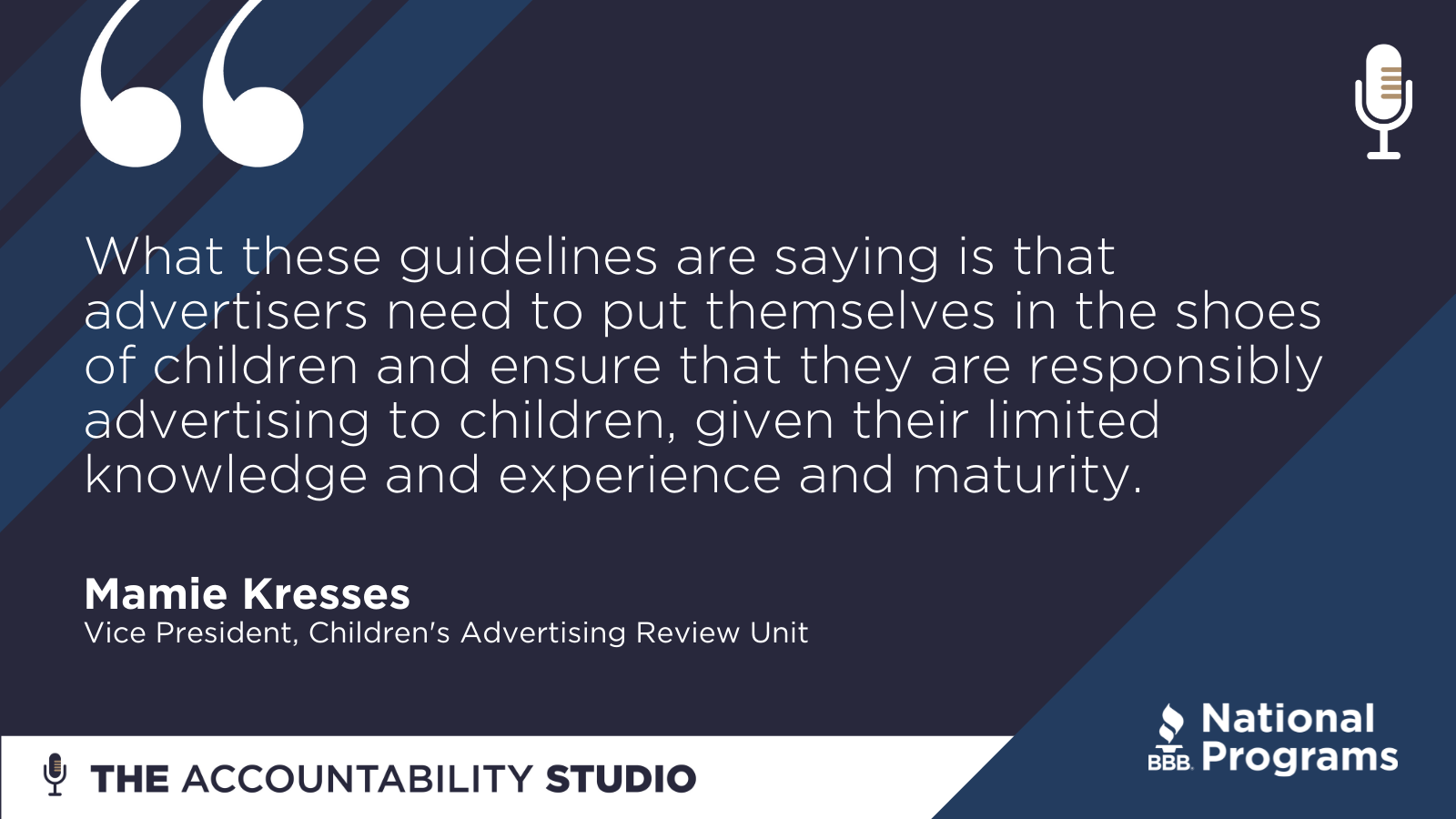
On this episode of The Accountability Studio, Executive Vice President for Policy at BBB National Programs Mary Engle facilitates an engaging conversation with Mamie Kresses, the leader of the Children’s Advertising Review Unit (CARU), about recently announced revisions to the CARU Advertising Guidelines.
Mary and Mamie’s conversation centered around three primary updates:
- Moving beyond being television-centric to address and reflect today’s digital advertising environment.
- Incorporating FTC guidance on endorsements and influencer marketing.
- Requiring that advertising not portray or encourage negative stereotyping, prejudice, or discrimination.
Mamie explained how the first revision involved adding new language to the guidelines that address children’s participation in the digital environment. Specifically, she spoke about how it applies to in-app and in-game advertising and purchases directed to children.
Since advancements in technology have provided children with more purchasing power, the revised guidelines detail that advertisers must not “unduly influence children with their advertising and in this purchasing power.” While the previous guidelines allowed CARU to take action against this type of behavior, the recent changes include direct statements and provisions to cover more specific issues in the digital environment.
One case Mamie spoke about was an app called My Talking Tom. In this case, CARU expressed concern about various advertisements within the app and the undue pressure placed on users. In the revised guidelines, CARU speaks to the use of unfair and manipulative techniques. They also call for advertisers to take their young audience into account when making the game.
The second revision they discussed was how CARU incorporated FTC guidance on influencer marketing. The revised guidelines now have a separate section on endorsers and influencers that lays out the basic FTC positions on this topic. This section speaks to how advertisers need to be transparent when they are paying an influencer. And how disclosures should be made.
The final revision that Mary and Mamie spoke about was on the topic of diversity, equity, and inclusion. Mamie explained that while the existing guidelines speak to the need for advertisements to support the healthy development of all children, the updates recognize that “we need more than aspiration. We need action.”
In the updated guidelines, CARU not only kept the language about it being a best practice to speak to all children from different backgrounds, but they also made it enforceable. As a result of this enforceable standard, CARU expects advertisers to consciously approach their advertising from the start to make sure they are not “encouraging, implicitly or explicitly, negative stereotyping or prejudice or other discrimination.” They hope to see this standard lead to the development of more inclusive, diverse advertisements.
After addressing these three primary changes, Mamie and Mary discussed some of the motivations behind the updates, one of which is the fact that children are vulnerable. Even though many are digital natives, that does not mean they inherently have the cognitive defenses and mindset to recognize advertising.
To conclude their conversation, they discussed the importance of advertisers recognizing that they have a responsibility to this young audience to ensure their campaigns are respectful and do not take advantage of them. In line with the spirit of the guidelines, advertisers should aim to protect children.
Visit to Learn More
Contact Info
CARU – infocaru@bbbnp.org
Listen to the full episode here.

